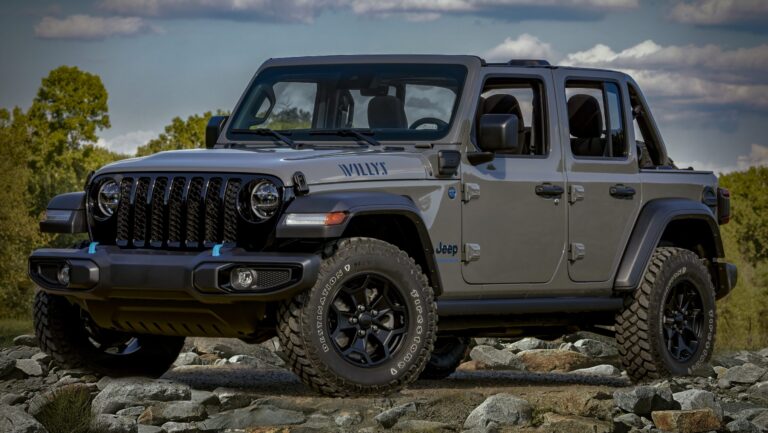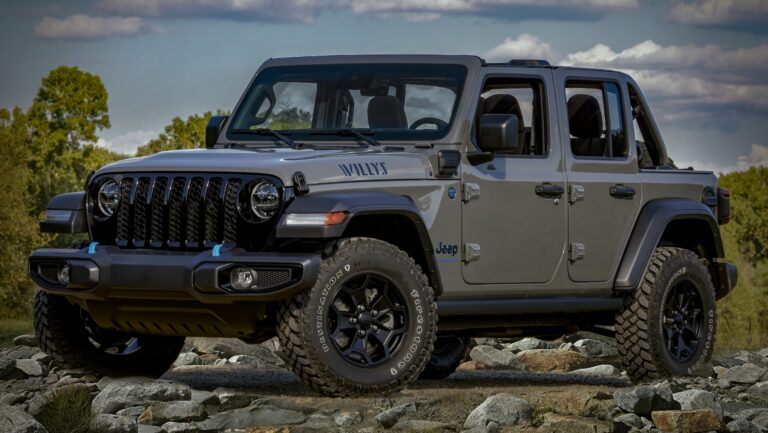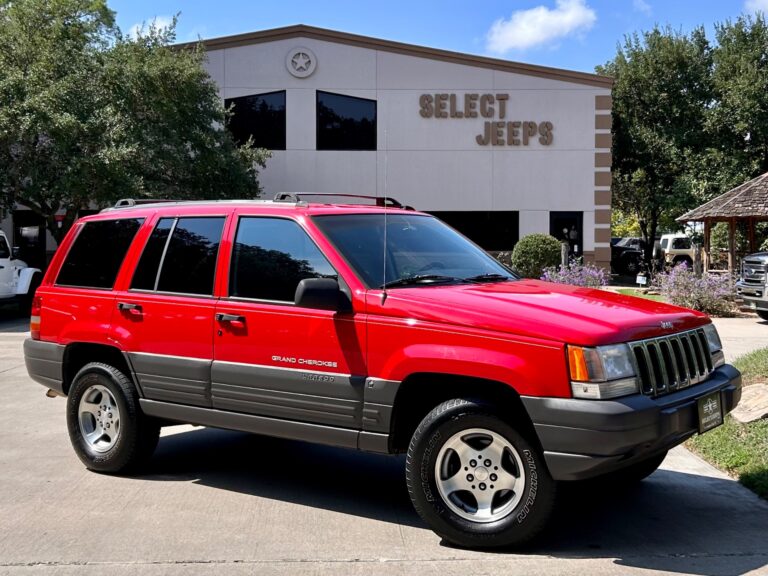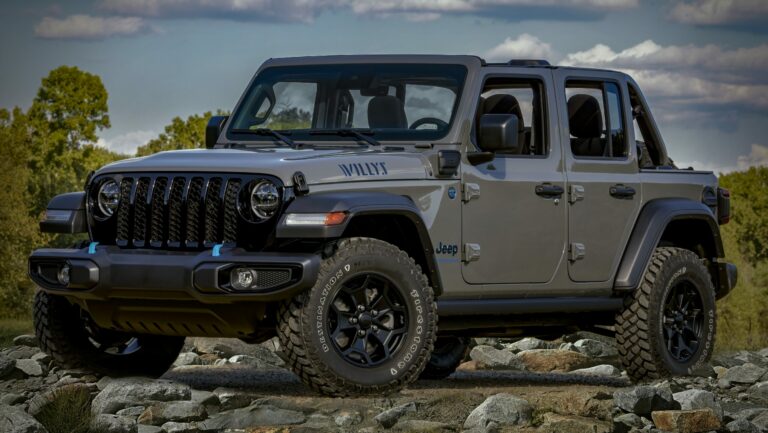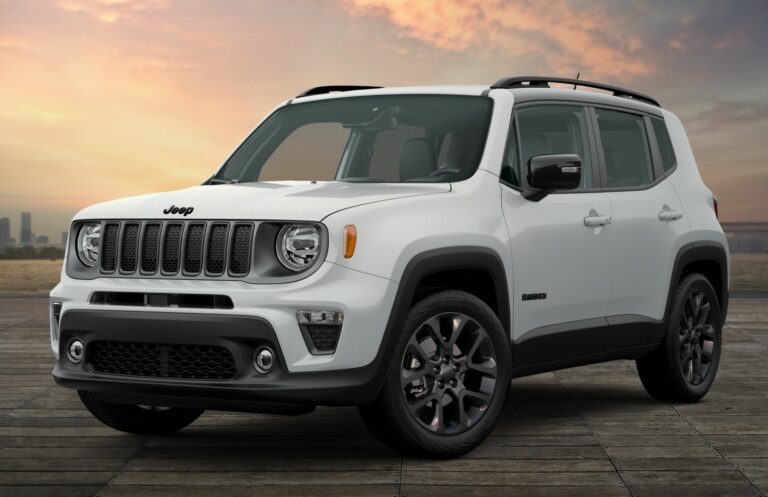1940s Willys Jeep For Sale: A Timeless Icon on the Market
1940s Willys Jeep For Sale: A Timeless Icon on the Market jeeps.truckstrend.com
The rumble of its L-head "Go-Devil" engine, the iconic flat fenders, and the undeniable sense of history it carries – the 1940s Willys Jeep is more than just a vehicle; it’s a living legend. Born from the crucible of World War II and quickly adapted for civilian life, these rugged, utilitarian machines became a symbol of American ingenuity and perseverance. Today, the quest for a 1940s Willys Jeep for sale is a journey for enthusiasts, collectors, and history buffs alike, seeking to own a piece of automotive heritage that shaped the world. This comprehensive guide will navigate the exciting, yet often challenging, landscape of acquiring one of these iconic vehicles, offering insights, practical advice, and everything you need to know before making your purchase.
A Legacy Forged in War: The Birth of the Willys Jeep
1940s Willys Jeep For Sale: A Timeless Icon on the Market
The story of the 1940s Willys Jeep begins in 1940, when the U.S. Army, anticipating its entry into World War II, put out a call for a lightweight, four-wheel-drive reconnaissance vehicle. Of the 135 companies invited, only three responded: Bantam, Willys-Overland, and Ford. While Bantam produced the initial prototype, it was Willys-Overland’s design, featuring the robust "Go-Devil" engine, that ultimately won the mass production contract.
The Willys MB (Military B) and its Ford-produced counterpart, the Ford GPW (General Purpose Willys), became the backbone of Allied forces, serving in every theater of war. General Dwight D. Eisenhower famously declared it one of "America’s greatest contributions to modern warfare." By the war’s end, over 600,000 Jeeps had been produced. Recognizing its immense potential beyond the battlefield, Willys-Overland quickly transitioned the design for civilian use, introducing the CJ-2A (Civilian Jeep) in 1945. These early civilian models, often referred to as the "Universal Jeep," retained much of the MB’s DNA but added features like a tailgate, larger headlights, and civilian-friendly paint schemes, ushering in the era of recreational four-wheeling and cementing the Jeep’s place in American culture.
Why Buy a 1940s Willys Jeep? Enduring Appeal and Investment
Owning a 1940s Willys Jeep offers a unique blend of historical significance, mechanical simplicity, and a distinct driving experience. For many, it’s about connecting with history, whether it’s the wartime legacy of the MB/GPW or the pioneering spirit of the early CJ-2A that helped build post-war America.
- Historical Value and Nostalgia: These vehicles are tangible artifacts of a pivotal era, evoking strong feelings of patriotism, resilience, and ingenuity.
- Mechanical Simplicity: The "Go-Devil" engine and straightforward mechanicals are remarkably durable and relatively easy to understand and repair, even for novice mechanics. Parts, thanks to a thriving aftermarket, are surprisingly accessible.
- Community and Events: Owning a vintage Willys opens doors to a vibrant community of fellow enthusiasts. There are numerous clubs, shows, and organized events dedicated to these historic vehicles, fostering camaraderie and shared knowledge.
- Potential for Appreciation: Well-maintained or expertly restored 1940s Willys Jeeps, especially original military examples, can be strong appreciating assets, making them not just a hobby but a sound investment for collectors.
- Unique Driving Experience: Driving a 1940s Willys is a visceral experience unlike modern vehicles. The manual steering, sparse interior, and direct connection to the road (or trail) offer an unfiltered journey back in time.

Understanding the Models: MB, GPW, and CJ-2A
When searching for a 1940s Willys Jeep for sale, it’s crucial to understand the distinct characteristics of the primary models produced during this decade:

- Willys MB (Military): Produced from 1941 to 1945, the MB is the quintessential WWII Jeep. It’s identifiable by its nine-slot grille, recessed headlights, and military-specific features like blackout lights, rifle holders, and military drab paint schemes. Original MBs often bear a wealth of military markings, adding to their historical value. Look for serial numbers on the frame, engine, and body to verify authenticity.
- Ford GPW (Military): Ford was contracted to produce Jeeps alongside Willys to meet wartime demand. The GPW is nearly identical to the MB, often indistinguishable at a glance. The key differentiator for collectors is the presence of the "F" script logo stamped on almost every component (bolts, engine parts, body panels, etc.). While functionally the same, the "F" script details are highly sought after by purists.
- Willys CJ-2A (Civilian): Introduced in late 1945, the CJ-2A marked the transition to civilian production. While retaining the fundamental structure, it featured several distinguishing elements: a seven-slot grille (which became the iconic Jeep grille), a side-mounted spare tire, a tailgate (a first for the Jeep), larger civilian-style headlights, and civilian color options like Autumn Yellow, Harvest Tan, and Potomac Gray. Early CJ-2As still had many military surplus parts, making them unique hybrids.

Where to Find Your 1940s Willys Jeep For Sale
Finding the right 1940s Willys Jeep requires patience and knowing where to look. The market is diverse, ranging from barn finds to concourse-level restorations.
- Online Marketplaces: Websites like eBay Motors, Hemmings, Bring a Trailer, and ClassicCars.com frequently list vintage Jeeps. Be sure to use specific search terms like "Willys MB," "Ford GPW," or "Willys CJ-2A."
- Specialized Forums & Clubs: Online forums dedicated to vintage Jeeps (e.g., G503.com for military Jeeps, EarlyCJ5.com for CJs) are invaluable resources. Members often list vehicles for sale, and the community can provide expert advice.
- Classic Car Dealerships: Some dealerships specialize in vintage military or off-road vehicles. They often offer higher-quality, pre-inspected vehicles, though usually at a premium.
- Auctions: Major auction houses like Mecum and Barrett-Jackson occasionally feature well-restored examples. Local estate or farm auctions can sometimes yield undiscovered gems, though often in "as-is" condition.
- Private Sellers & Word of Mouth: Many deals happen through personal connections. Attend local car shows, join clubs, and let people know you’re looking. You might find a vehicle that hasn’t hit the public market.
The Inspection Checklist: What to Look For Before You Buy
Once you’ve found a potential candidate, a thorough inspection is paramount. These vehicles are 70+ years old, and condition varies wildly.
- Rust: This is the number one killer of vintage Jeeps. Inspect the frame rails (especially near spring hangers and crossmembers), the body tub (floorboards, hat channels underneath, firewall, rear wheel wells), and the fenders. Surface rust is manageable; extensive rot requires significant, costly repair.
- Engine & Drivetrain: Check for leaks (oil, coolant, transmission, transfer case). Listen for unusual noises (knocks, rattles). Ideally, perform a compression test on the "Go-Devil" engine. Check the transmission and transfer case for smooth shifting and engagement of 4WD. Look for signs of major modifications (e.g., engine swaps, which diminish originality value).
- Suspension & Steering: Inspect leaf springs for cracks or sagging. Check tie rods, drag links, and kingpins for excessive play. The steering box should not have excessive slop.
- Electrical System: Most original 1940s Jeeps are 6-volt systems. Many have been converted to 12-volt for easier starting and accessory use. Verify the current system and check wiring for deterioration, splices, or shorts. Test all lights and gauges.
- Brakes: These vehicles use drum brakes. Check the master cylinder for leaks and ensure the pedal feels firm. Factor in a complete brake system overhaul for safety, regardless of apparent condition.
- Documentation: A clear title is essential. Verify the VIN/serial numbers on the title match those on the vehicle (frame, engine, body tag). Any historical documentation, service records, or photos of previous restorations add significant value.
- Originality vs. Restoration: Decide what’s important to you. Is it a highly original, unrestored survivor (rare and valuable), a well-done period-correct restoration, or a modified "driver" that’s been updated for modern use?
- Test Drive: If possible, drive the vehicle. Listen for strange noises, check for proper braking, and assess the steering. Be realistic – it won’t drive like a modern car.
Navigating the Purchase: Important Considerations and Tips
- Budgeting: The purchase price is just the beginning. Factor in potential restoration costs (paint, bodywork, mechanicals), parts, shipping, insurance, and ongoing maintenance. A rough project could be $5,000-$15,000, a running driver $15,000-$30,000, and a fully restored or concourse-level example $30,000-$60,000+.
- Authenticity vs. Modified: Be clear about your intentions. A military Jeep should ideally be restored to its original wartime configuration for maximum value. A CJ-2A offers more flexibility for minor upgrades.
- Pre-Purchase Inspection (PPI): If you’re not an expert, hire one. A vintage Jeep specialist can identify issues you might miss and provide an unbiased assessment of the vehicle’s true condition.
- Negotiation: Don’t be afraid to negotiate. Research comparable sales and be prepared to walk away if the price isn’t right or the seller isn’t transparent.
- Transportation: Plan how you’ll get the Jeep home. If it’s a non-runner or a project, you’ll need a flatbed tow or professional transport.
- Titling and Registration: Laws vary by state regarding classic vehicle registration. Ensure the VIN is clear and the title is correct. Some states might require a VIN inspection.
- Joining the Community: Before or after your purchase, connect with vintage Jeep clubs and online forums. They are invaluable resources for parts, technical advice, and shared experiences.
Potential Challenges and Solutions
While rewarding, owning a 1940s Willys Jeep comes with its unique set of challenges:
- Parts Availability: Challenge: Finding original NOS (New Old Stock) parts can be difficult and expensive. Solution: Fortunately, a robust aftermarket exists, reproducing almost every component needed for restoration or repair. Specialized vendors cater specifically to vintage Willys parts.
- Mechanical Expertise: Challenge: While simple, these vehicles require specific knowledge of their mechanical systems. Modern mechanics might not be familiar with 6-volt systems, vacuum wipers, or non-synchronized transmissions. Solution: Invest in original service manuals. Join online forums where experienced owners share their knowledge. Seek out specialized vintage vehicle mechanics.
- Rust Repair: Challenge: Extensive rust on the frame or body tub requires welding and fabrication skills. Solution: Unless you have advanced bodywork experience, this is best left to professional restorers. New reproduction body tubs are also available, though costly.
- Roadworthiness: Challenge: Original 1940s Jeeps lack modern safety features like seatbelts, turn signals (often), and powerful brakes. Solution: For regular driving, consider adding seatbelts, turn signals, and potentially upgrading to a dual-circuit brake master cylinder for enhanced safety, while maintaining a period-correct appearance.
- Finding the "Right" One: Challenge: It can take time to find a vehicle that matches your budget, desired condition, and specific model preference. Solution: Be patient, persistent, and prepared to travel. The perfect Jeep might not be in your backyard.
Price Guide: 1940s Willys Jeep For Sale (Estimated Ranges)
Prices for 1940s Willys Jeeps vary significantly based on model, originality, condition, and market demand. These are general estimates and can fluctuate.
| Condition Category | Willys MB / Ford GPW (Military) | Willys CJ-2A (Civilian) | Notes |
|---|---|---|---|
| Project | $5,000 – $15,000 | $4,000 – $12,000 | Non-running, significant rust, incomplete, major restoration required. Suitable for experienced restorers. |
| Driver Quality | $15,000 – $30,000 | $12,000 – $25,000 | Running, driving, roadworthy but with visible flaws, older paint, minor mechanical issues. Good for regular use and ongoing restoration. |
| Restored | $30,000 – $50,000 | $25,000 – $40,000 | Professionally restored to good, near-original condition. Excellent paint, solid mechanics, clean interior. Ready for shows or reliable driving. |
| Concourse/Show | $50,000 – $75,000+ | $40,000 – $60,000+ | Meticulously restored to original factory specifications, often with NOS parts. Show-winning quality, high originality. Rare survivors in original condition may exceed these ranges. |
Note: Ford GPWs with extensive "F" script originality may command a premium over Willys MBs in comparable condition due to collector demand.
Frequently Asked Questions (FAQ)
Q: What’s the main difference between a Willys MB and a Ford GPW?
A: Functionally, they are nearly identical. The primary difference for collectors is the "F" script stamp found on most components of the Ford GPW, indicating its manufacturer.
Q: Are parts hard to find for 1940s Willys Jeeps?
A: Surprisingly, no. Due to their popularity, a robust aftermarket supplies almost all necessary reproduction parts, from body panels to engine components. Used original parts are also available.
Q: Can a 1940s Willys Jeep be a daily driver?
A: While mechanically robust, their lack of modern safety features (seatbelts, crumple zones), slower top speeds, and rudimentary comforts make them generally unsuitable for daily driving in modern traffic. They are best enjoyed for leisure, parades, and off-road excursions.
Q: What kind of fuel economy can I expect?
A: The "Go-Devil" engine is not known for its fuel efficiency. Expect anywhere from 12-18 miles per gallon, depending on driving conditions and vehicle tune.
Q: Is it expensive to insure a vintage Willys Jeep?
A: No, classic car insurance is typically much more affordable than standard car insurance, as these vehicles are driven less frequently and are considered collectible. Many companies offer specialized policies.
Q: What is the "Go-Devil" engine?
A: It’s the nickname for the Willys L-134 engine, a 134 cubic inch (2.2L) inline-four cylinder, side-valve (flathead) engine. It’s renowned for its simplicity, durability, and reliability.
Q: How do I verify the VIN or serial number on a 1940s Willys Jeep?
A: The primary serial number is typically stamped on the frame rail (usually on the driver’s side, near the front spring hanger or engine mount). Military Jeeps also have a data plate on the dashboard. For CJ-2As, the serial number is on a plate on the firewall. Consult original Willys production data or online resources for proper decoding.
Conclusion
Embarking on the journey to find a 1940s Willys Jeep for sale is an exciting adventure into automotive history. Whether you’re drawn to the legendary military MB/GPW or the pioneering civilian CJ-2A, owning one of these iconic vehicles offers a unique connection to the past, a rewarding mechanical experience, and entry into a passionate community. While the search and restoration may present challenges, the enduring appeal, mechanical simplicity, and sheer historical significance of the 1940s Willys Jeep make it an immensely fulfilling acquisition. It’s more than just a purchase; it’s an investment in a piece of American heritage that continues to inspire and captivate generations.

